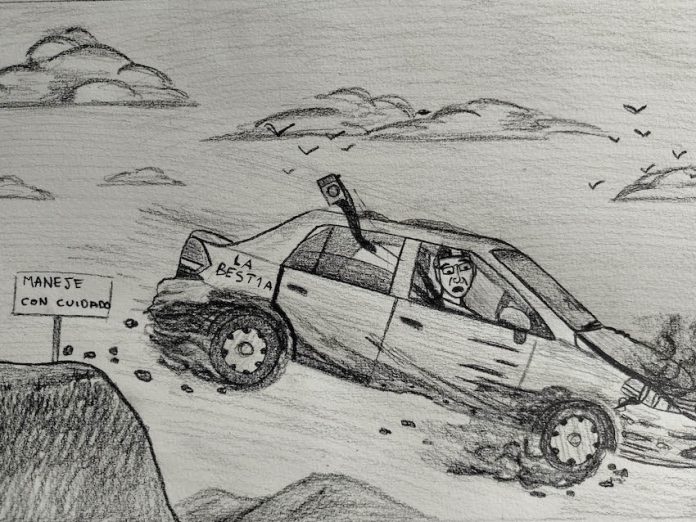I’m absolutely convinced that cars driven in Mexico are the toughest in the world. They’re also among the most abused.
Whenever I return to San Gregorio Atlapulco, a pueblo in Xochimilco where I lived for two years, I head to the hills with my friend Javier to explore the pre-Hispanic ruins. We’ve made all sorts of exciting discoveries, but even more exciting is the ride up to the ruins.
Javier has an old Nissan sedan that was definitely not made for the kind of driving done on these hills. I keep telling him that we need a truck or some sort of four-wheel drive vehicle, but we always end up taking his poor ol’ car.
Thin wire keeps the car’s bumpers attached, though they frequently get caught on rocks as we drive along – I’m convinced they’re going to get yanked off someday. Many times during our ascent, the bottom of the car scrapes the jagged surface of the road. Each time it does, Javier lets out a soft, “Oh.” No exclamation mark needed; he never seems concerned.
The hills aren’t very high, but the inclines are quite steep and challenging. The first stretch is a mix of cobblestones and rocks — and some holes where rocks and cobblestones used to be. Next comes the section of hard-packed dirt that’s pocked with holes and littered with gravel. I think I’ve loosened a few of my teeth traversing this section.
The roads, such as they are, are only wide enough for one car, although vehicles go in both directions. So I suppose it’s technically a two-lane road. In theory, anyway. But if two vehicles approach from opposite directions, someone’s gotta give.
The road also boasts several hairpin curves — the kind that necessitate inching forward and back several times in order to get past them. Of course, there aren’t any guardrails, so go back too far, and you’ll find yourself on a significant drop to the bottom.
This is the gentlest part of the journey.
There’s no logical reason Javier’s car continues making it up and down those hills, but up and down it goes. I’ve christened it La Bestia, Jr., the beast.
And that’s not all: as anyone living in Mexico knows, there are two seasons here: wet and dry. Both offer interesting driving experiences.
During the wet season, getting up the “paved” road is no big deal. But after that, the road, is just dirt, which, as you might expect, turns to mud in the rain.
Javier’s car fishtails maniacally as it strains to continue onward on such a road, flinging mud in all directions, as he fights for control. The trip takes a lot longer in the rainy season, and all that fishtailing probably doubles the miles.
As much fun as that must sound, my favorite time to go is during the dry season.
The air fills with dust as we heave up the hill. I have to say I’m not sure if the windshield wipers work, since Javier has never used them in my presence, preferring to lean forward and peer through the layer of dirt blanketing the windshield. I can’t see anything, and I’m guessing he can’t either.
He’s basically going by feel at that point. I figure Javier’s saving the wipers for a time when their use is really warranted but I’m not sure when that might be. Even storms have not seemed to be such a situation.
The final stretch of road is filled with big, sometimes deep, holes, and this is where we’ll get stuck several times a trip. Sometimes I, and whoever else is with us, will get out and push the car, but Javier’s preferred method, however, is to simply press the gas pedal to the floor, which causes the rear tires to spin furiously.
Until these trips, I’d only seen smoke pouring off of tires in movies. Now, I see it every time we head up these hills in the dry season. Let me tell you, if you’ve never smelled burning rubber, you’re missing out on a real olfactory treat.
After all that spinning, one tire will finally catch on something solid, and that’s when we shoot out of the hole, Javier struggling to regain control the whole way.
After surviving several of these sorts of moments, I realize there’s a chance that someday, we may pull a Thelma and Louise: the tires catch, we shoot out and over the guardrails and then launch into space.
I just hope someone finds us. Or, better yet, films our flight.
Joseph Sorrentino, a writer, photographer and author of the book San Gregorio Atlapulco: Cosmvisiones and of Stinky Island Tales: Some Stories from an Italian-American Childhood, is a regular contributor to Mexico News Daily. More examples of his photographs and links to other articles may be found at www.sorrentinophotography.com He currently lives in Chipilo, Puebla.
